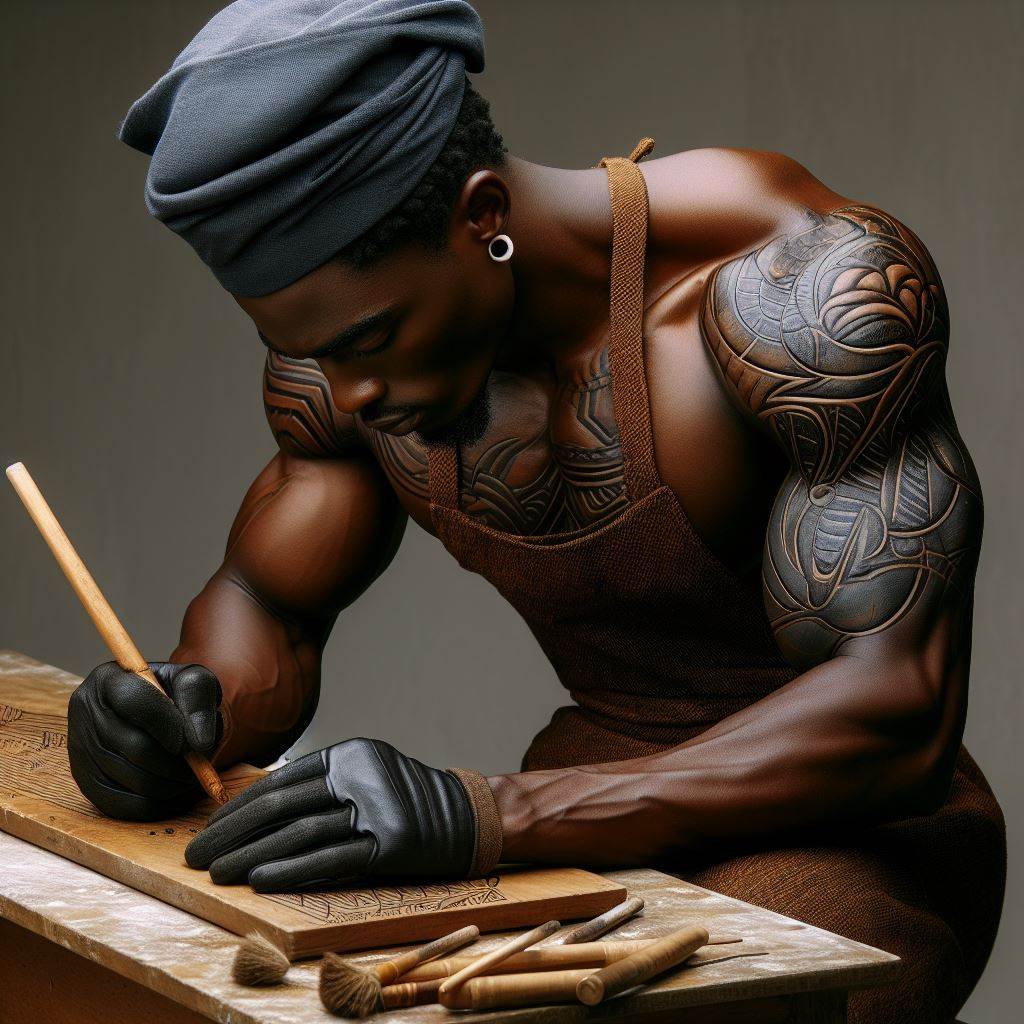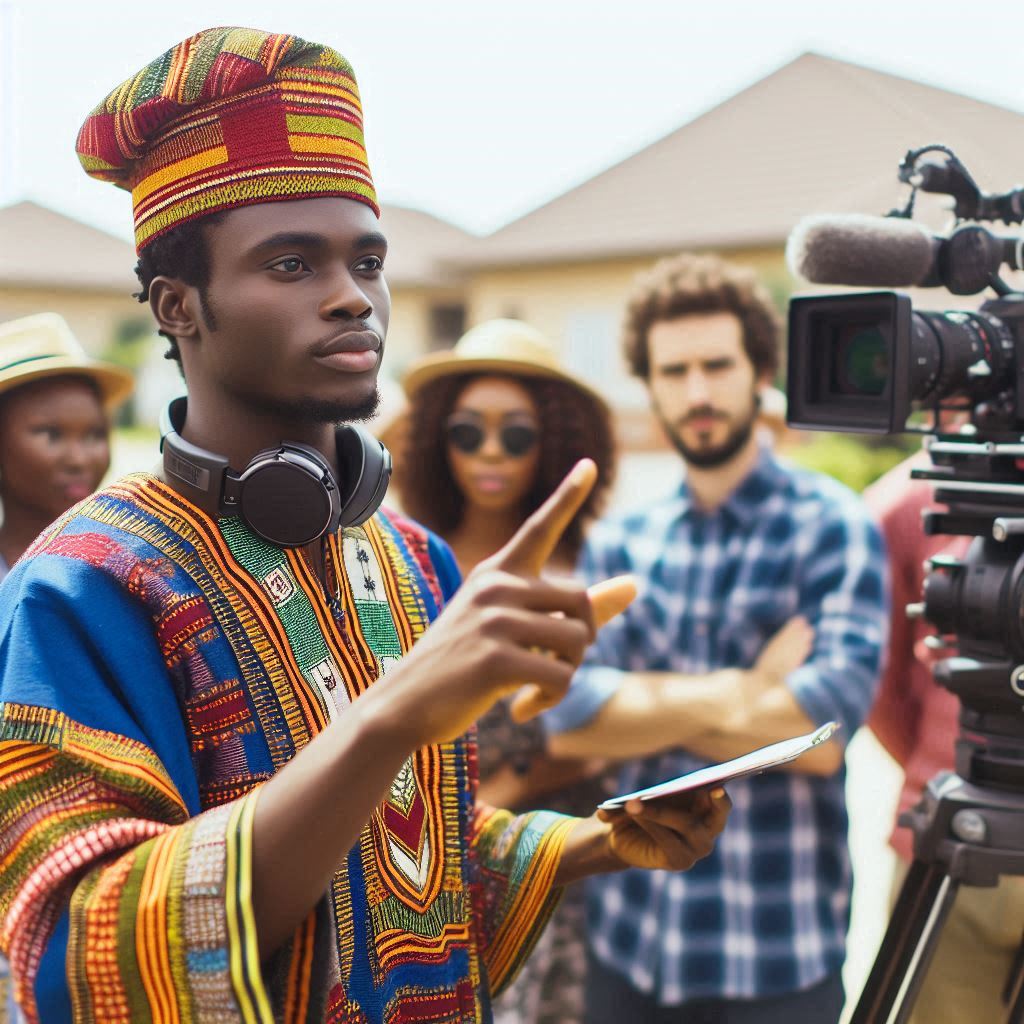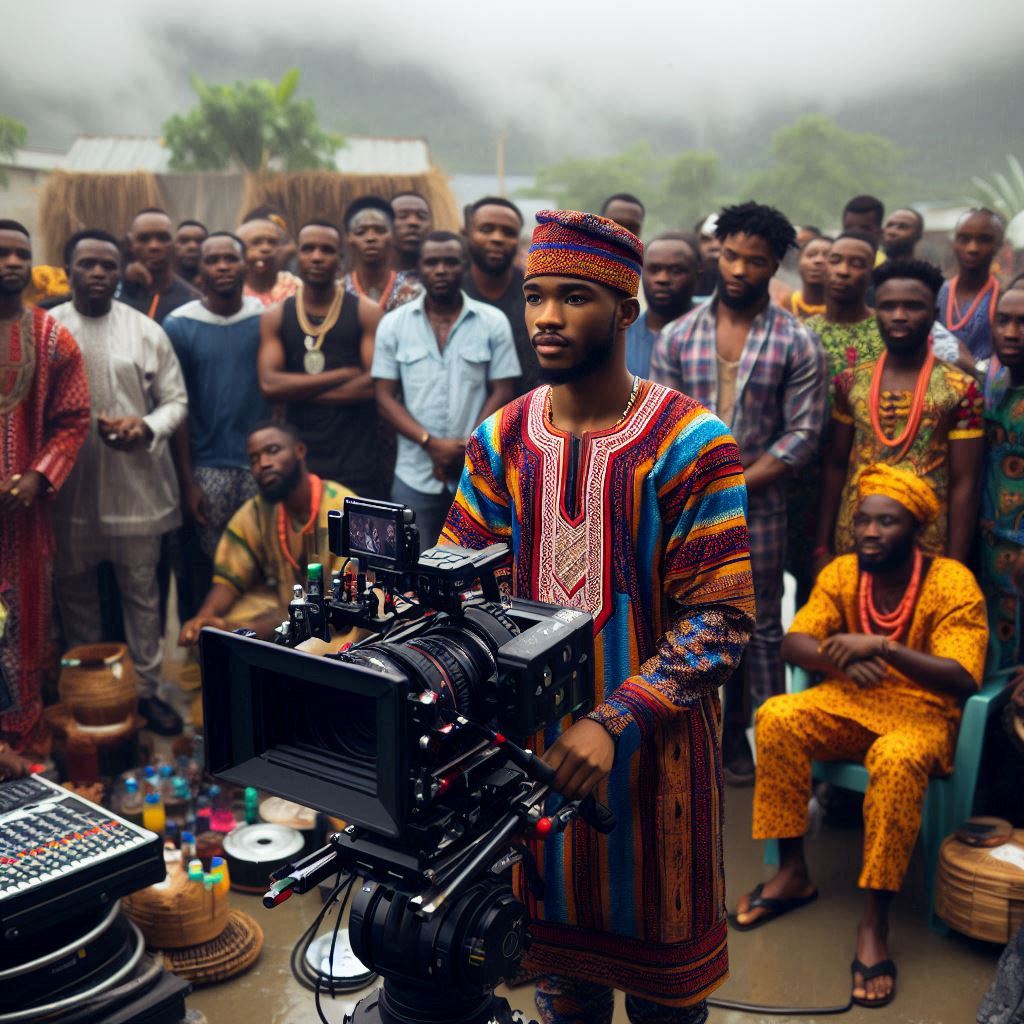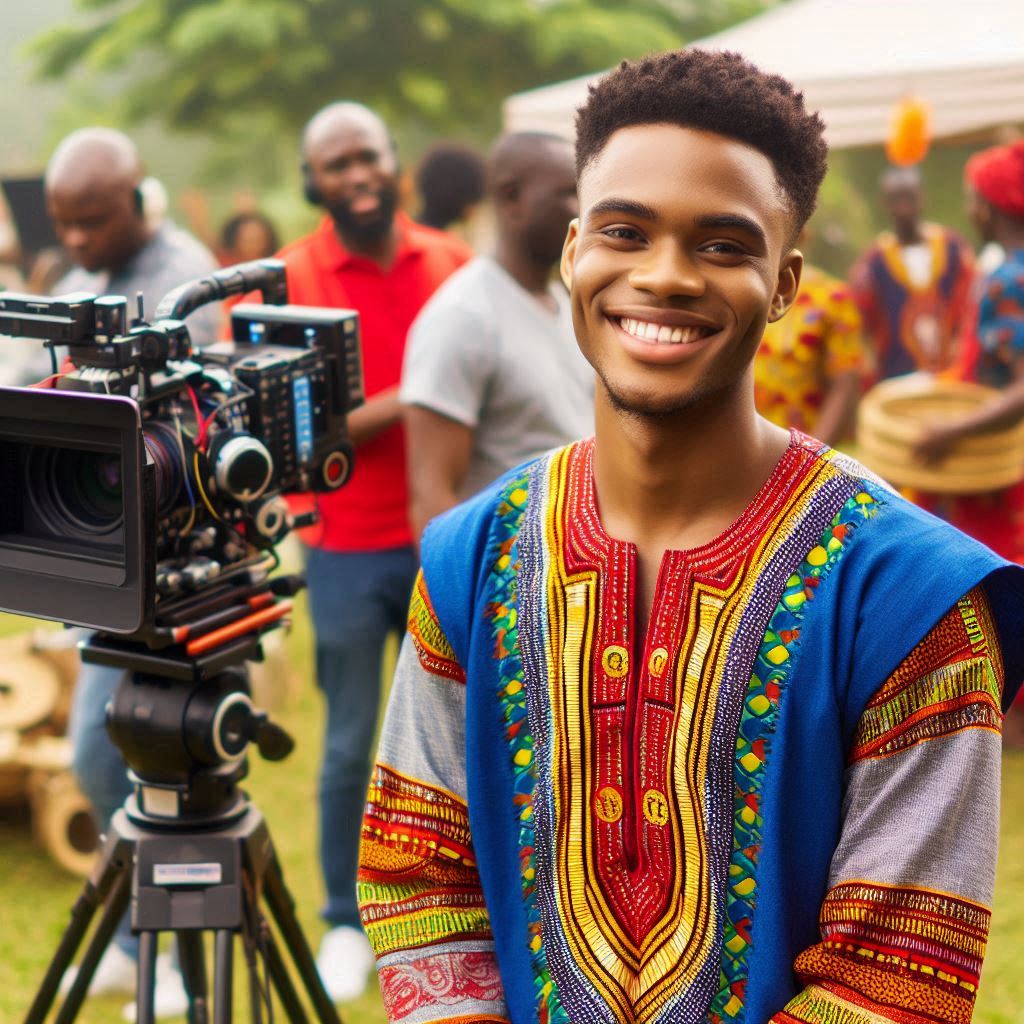Introduction
Contemporary art movements in Nigeria are dynamic expressions of cultural identity. These movements play a crucial role in shaping the artistic landscape of the country.
In a country as culturally diverse as Nigeria, contemporary art movements serve as a reflection of the society’s values and traditions. These movements offer artists a platform to explore and reinterpret Nigerian history and heritage through their work.
The significance of contemporary art movements in Nigeria cannot be overstated.
They provide a space for artists to engage with current social, political, and economic issues facing the country. This allows for a deeper understanding and appreciation of the complexities of Nigerian society.
These movements ignite creativity and innovation in the Nigerian art scene, inspiring artists to explore new ideas.
They actively encourage artists to experiment with various mediums, techniques, and forms of expression, thereby pushing artistic boundaries in the country.
Contemporary art movements in Nigeria actively promote cultural exchange and dialogue locally and internationally. They bridge communities, fostering understanding and appreciation of diverse perspectives.
Contemporary art movements in Nigeria vitalize artistic development, reflecting society’s richness and contributing to ongoing dialogue. They shape Nigeria’s past, present, and future.
Origin and Development of Contemporary Art Movements in Nigeria:
Historical Evolution
Contemporary art movements in Nigeria have deep roots in the country’s rich cultural heritage.
One of the earliest art movements was the Zaria Art Society founded in the 1950s.
The Zaria Art Society, dubbed the “Zaria Rebels,” aimed to shatter colonial art traditions.
These early movements laid the foundation for the diverse contemporary art scene in Nigeria today.
Key Factors Contributing to Rise of Movements
- Cultural Identity: Nigerian artists have been exploring themes of identity and heritage in their work.
- Political Environment: The turbulent political history of Nigeria has inspired artists to create socially conscious art.
- Global Influence: Exposure to international art movements has influenced Nigerian artists to experiment with new techniques.
- Education: Institutions like the Nsukka School of Art have played a significant role in nurturing young talents
- Supportive Community: The vibrant art community in Nigeria provides platforms for artists to exhibit and collaborate.
- Technological Advancements: Access to digital tools has enabled artists to explore new forms of expression.
- Economic Growth: The growing economy has created opportunities for artists to thrive and push boundaries.
- Nigerian artists living abroad actively contribute to contemporary art movements, influencing its development with their unique perspectives.
The origin and development of contemporary art movements in Nigeria reflect a dynamic, evolving landscape. They’re shaped by historical, cultural, and social factors.
Major Contemporary Art Movements in Nigeria
Identifying Major Contemporary Art Movements in Nigeria
As a country with a rich cultural heritage and diverse artistic expressions, Nigeria has witnessed the emergence of several prominent contemporary art movements that have made a significant impact on the global art scene.
Let’s delve into some of these movements and explore the key artists and artworks associated with each one.
Nsukka School
The Nsukka School is arguably one of the most influential contemporary art movements in Nigeria. Founded in the early 1970s at the University of Nigeria, Nsukka, this movement emphasized the fusion of traditional Igbo art forms with modern artistic techniques.
Key Artists
- Uche Okeke: Renowned for his pioneering efforts in promoting contemporary art in Nigeria.
- El Anatsui: Internationally acclaimed for his stunning metallic tapestries made from recycled materials.
Key Artworks
- Uche Okeke’s “Water Spirit Mask”: A powerful representation of Igbo cosmo-aesthetics.
- El Anatsui’s “Waste Paper Bags”: A thought-provoking commentary on consumerism and environmental degradation.
Zaria Rebels
The Zaria Rebels, a significant contemporary art movement, emerged in the 1960s at Ahmadu Bello University in Zaria. This group of artists challenged conventional artistic norms and embraced radical experimentation in their work.
Key Artists
- Yusuf Grillo: Known for his vibrant and dynamic paintings that blend traditional Nigerian motifs with modernist influences.
- Bruce Onobrakpeya: Celebrated for his innovative printmaking techniques and intricate metal works.
Key Artworks
- Yusuf Grillo’s “The Jujus”: A striking portrayal of traditional African deities in a contemporary context.
- Bruce Onobrakpeya’s “Victory Series”: A series of metal reliefs that explore themes of resilience and triumph over adversity.
Nollywood Art Movement
With the rise of Nigeria’s booming film industry, known as Nollywood, a new art movement has emerged that explores the intersection of visual arts and popular culture. This movement incorporates elements of film, photography, and performance art.
Key Artists
- Peju Alatise: Renowned for her multimedia installations that challenge societal norms and gender roles.
- Emeka Ogboh: Internationally acclaimed for his sound installations that capture the vibrant soundscape of Lagos.
Key Artworks
- Peju Alatise’s “Flying Girls”: A haunting installation that addresses themes of freedom and confinement.
- Emeka Ogboh’s “Lagos Soundscapes”: A sensory experience that immerses viewers in the auditory landscape of the city.
These are just a few examples of the vibrant and diverse contemporary art movements that are shaping the artistic landscape of Nigeria. The country’s rich cultural heritage and innovative artistic practices continue to inspire and captivate audiences around the world.
Read: How to Open a Beauty Salon in Nigeria: Step-by-Step
Influence of Traditional Nigerian Art on Contemporary Art Movements
Traditional Nigerian art forms have served as a strong influence on contemporary artists in the country. The rich cultural heritage and history of Nigeria have inspired artists to explore and reinterpret traditional art forms in their works.
One of the key ways traditional Nigerian art has influenced contemporary art movements is through the use of motifs and symbols. Artists often incorporate traditional patterns, symbols, and motifs into their work, providing a connection to the country’s cultural roots.
Examples of Traditional Nigerian Art Influences in Contemporary Art
- Gelede Masquerade: The Gelede masquerade, a traditional Yoruba art form, has inspired contemporary artists to create works that explore themes of gender and social hierarchy.
- Igbo Ukwu Bronze Art: The intricate bronze works of Igbo Ukwu have influenced contemporary sculptors to experiment with different materials and techniques in their sculptures.
- Adire Textiles: The vibrant patterns and colors of Adire textiles have been reinterpreted by contemporary fashion designers, creating modern clothing pieces that pay homage to traditional Nigerian art.
Contemporary artists draw inspiration from traditional Nigerian art, focusing on storytelling and oral traditions.
This emphasis influences their work profoundly.Many contemporary artworks in Nigeria incorporate narrative elements, drawing from the country’s rich storytelling traditions.
Contemporary Nigerian artists blend traditional and modern elements, bridging past and present to foster innovation and preserve heritage.
Benefits of Fusion of Traditional and Modern Elements in Nigerian Artworks
- Preservation of Cultural Heritage: By incorporating traditional elements, contemporary artists help to preserve and promote Nigeria’s rich cultural heritage.
- Innovation and Creativity: The fusion of traditional and modern elements allows artists to innovate and experiment with new ideas, pushing the boundaries of Nigerian art.
- Cross-Cultural Exchange: Contemporary artworks that blend traditional and modern elements create opportunities for cross-cultural exchange and dialogue, fostering a deeper understanding of Nigerian art and culture.
Most importantly, the influence of traditional Nigerian art on contemporary art movements cannot be understated.
From motifs and symbols to storytelling traditions, traditional art forms have provided a strong foundation for contemporary artists to build upon, resulting in a vibrant and dynamic art scene in Nigeria.
Read: Cosmetology and Beauty Therapy Scholarships in Nigeria
Themes and Techniques in Contemporary Nigerian Art
Contemporary Nigerian artists explore a wide range of themes and use various techniques to express themselves. Here are some common themes and techniques found in their works:
Themes
- Identity
- Globalization
- Colonialism
- Gender
- Social Injustice
- Tradition vs. Modernity
- Religion
- Nationalism
These themes reflect the complex and diverse experiences of Nigerians and how they navigate the contemporary world.
Techniques
- Mixed Media
- Textile Art
- Performance Art
- Photography
- Sculpture
- Installation Art
- Abstract Expressionism
- Realism
Contemporary Nigerian artists often blend traditional techniques with modern approaches to create unique artworks that resonate with viewers.
Through their work, these artists address pressing social, political, and cultural issues in Nigerian society. They use art as a tool for activism, advocacy, and cultural critique.
Contemporary Nigerian art exemplifies Nigerian artists’ vibrancy, creativity, and resilience on the global art scene. With dynamic themes and techniques, they captivate audiences worldwide.
Read: Day in the Life of a Nigerian Beauty Therapist
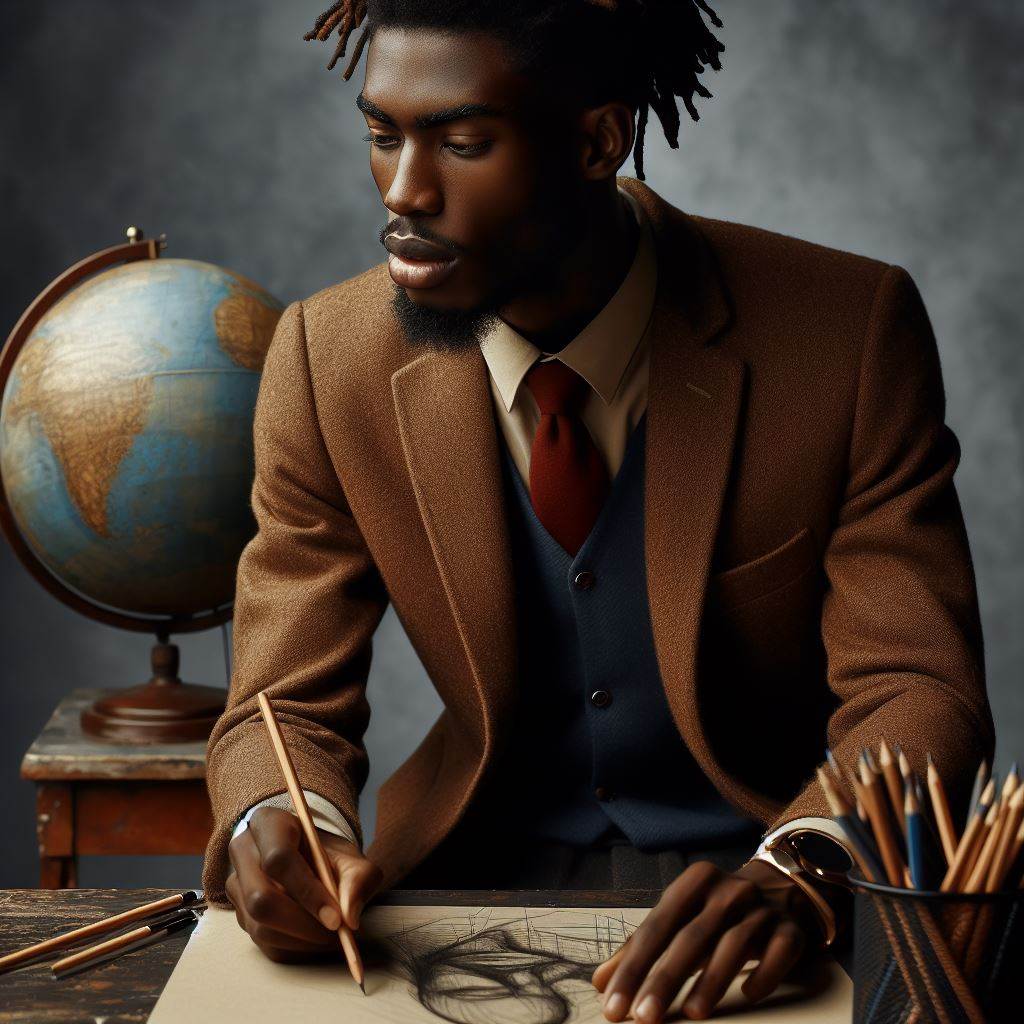
You Might Also Like: Prominent Nigerian Playwrights and Their Works
Delve into the Subject: Arabic Language Proficiency Exams in Nigeria
Impact of Contemporary Art Movements on Society
The social and cultural impact of contemporary art movements in Nigeria cannot be understated. These movements have played a significant role in shaping public discourse, challenging norms, and bringing about social change.
Artists have become important catalysts for societal transformation and have used their work to address pressing issues facing Nigerian society.
Challenging Perceptions
Contemporary art movements in Nigeria have been instrumental in challenging conventional perceptions and stereotypes.
Artists have used their work to challenge prevailing narratives and push boundaries, forcing society to confront difficult truths and question long-held beliefs.
Cultural Preservation
One of the key roles of contemporary artists in Nigeria is the preservation of cultural heritage. Through their art, artists have been able to document and celebrate Nigerian culture, traditions, and history, ensuring that these elements are not lost or forgotten.
Advocacy and Social Change
Contemporary art movements have become a powerful tool for advocacy and social change in Nigeria.
Artists actively address gender inequality, political corruption, and environmental degradation, igniting crucial discussions and mobilizing communities for action.
Education and Awareness
Contemporary Nigerian artists use their talents to educate the public on human rights violations, ethnic tensions, and poverty. They enlighten and raise awareness through their art, addressing pressing social issues.
Community Engagement
Contemporary art movements foster community engagement and collaboration, with artists working alongside locals to create reflective, unifying art.
Empowerment and Representation
Artists in Nigeria have played a crucial role in empowering marginalized groups and providing representation for those who are often overlooked or silenced. Through their work, artists have given voice to the voiceless and empowered individuals to tell their own stories.
Economic Impact
The growing interest in Nigerian contemporary art has increased market demand, providing artists with economic opportunities. They can earn a living through their work, contributing to the economy.
Contemporary art movements in Nigeria profoundly impact society, shaping discourse, challenging norms, and propelling social change.
Artists have played a critical role in shaping the cultural landscape of Nigeria, advocating for important issues, and empowering communities.
The power of art to educate, engage, and inspire cannot be underestimated, and Nigerian artists continue to be at the forefront of using their creativity for the betterment of society.
Transform Your Career with Expert Guidance
Get personalized mentorship consulting that’s tailored to your unique path. Our expert advice is actionable and exclusive.
Get StartedRead: Communication Arts and Social Media Influence
Gain More Insights: Entrance Exams for Nigerian Music Schools
You Might Also Like: Government Policies on European Language Education
Challenges Faced by Contemporary Nigerian Artists
In the context of Nigeria, contemporary artists face numerous challenges that hinder their growth and development. Some of these challenges include:
- Lack of resources: One of the major obstacles faced by contemporary Nigerian artists is the lack of financial resources to support their artistic endeavors. This includes funding for materials, studio space, and exhibition opportunities.
- Limited access to art education: Many artists in Nigeria struggle to access quality art education and training, which hinders their ability to develop their skills and expand their artistic vision.
- Minimal government support: The Nigerian government has historically provided limited support for the arts, resulting in a lack of infrastructure and funding for the artistic community.
- Limited exhibition opportunities: Contemporary Nigerian artists often struggle to find platforms to showcase their work, as galleries and exhibition spaces are limited in the country.
- Many Nigerian artists face challenges in gaining critical recognition locally and internationally, affecting their career sustainability.
- Cultural challenges: Nigerian artists often face cultural barriers that limit their creativity and expression, as certain subjects or artistic styles may be considered taboo or controversial in the society.
How these challenges impact the growth and sustainability of art movements in the country
These challenges have a significant impact on the growth and sustainability of art movements in Nigeria.
Without adequate resources, support, and recognition, contemporary artists may struggle to produce and exhibit their work, leading to a stagnation in the development of the country’s art scene.
Limited education and exhibition opportunities hinder Nigerian art exposure to wider local and global audiences.
To address these challenges, it is essential for stakeholders in the art community, including the government, art institutions, and patrons, to provide more support for contemporary Nigerian artists.
This can include increased funding for the arts, better access to education and training, and more opportunities for artists to exhibit and promote their work.
By addressing these obstacles, Nigeria can nurture a thriving and sustainable art scene that contributes to the cultural and artistic landscape of the country.
Delve into the Subject: Top Nigerian Universities for International Politics Studies
Delve into the Subject: Career Opportunities for Foreign Language Graduates
Find Out More: Impact of Criminology Research on Nigerian Society
Conclusion
Contemporary art movements in Nigeria play a significant role in the cultural landscape. These movements reflect the country’s rich heritage and evolving identity. Artists in Nigeria use diverse mediums and techniques, pushing creative boundaries.
Significance of Contemporary Art Movements
- Cultural Expression: Contemporary art showcases Nigeria’s vibrant culture and history.
- Social Commentary: Artists address important social issues through their work.
- Global Recognition: Nigerian contemporary art gains international acclaim, enhancing the country’s cultural prestige.
Future of Nigerian Art
The future of Nigerian art looks promising. Artists continue to innovate, blending traditional and modern styles. The art scene thrives with exhibitions, galleries, and festivals. Nigerian artists have the potential to achieve even greater global recognition.
- Innovation: Emerging artists experiment with new techniques and materials.
- Growth: The art market in Nigeria expands, attracting local and international collectors.
- Collaboration: Nigerian artists collaborate with global counterparts, fostering cross-cultural exchanges.
Nigerian contemporary art holds immense potential for growth and innovation. As artists explore new horizons, they contribute to the dynamic and ever-evolving art scene. The future of Nigerian art is bright, with limitless possibilities for creativity and expression.

